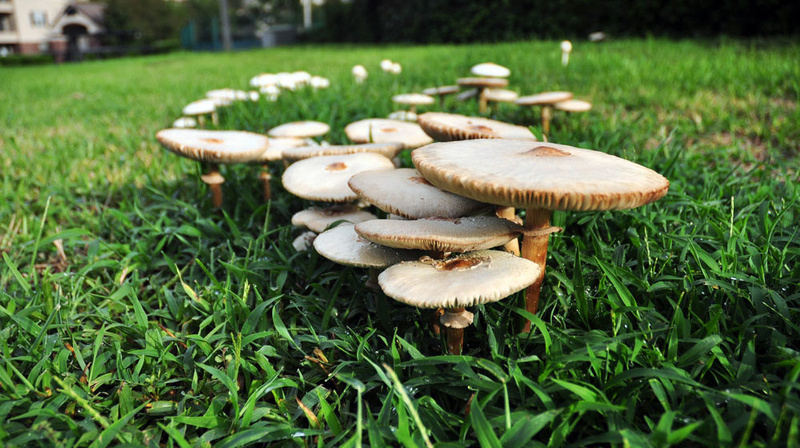
Disease: Coming to a Lawn Near You?
Florida lawn diseases include Rust, Fairy Ring, Gray Leaf Spot, Brown Patch Fungus, Dollar Spot, and Take-All Root Rot. Hot, humid, wet summers create hospitable growing conditions for these diseases, which must be managed by fungicides and cultural controls such as proper mowing.
Florida’s hot, humid, rainy summer conditions provide an extra favorable environment for lawn diseases to flourish at this time of year, although some diseases can occur year-round.
Take-all Root Rot
This is a disease of grass roots where, at end stages, the roots are black and rotted, and turf is easy to pull out. Large patches of grass will be dead and will look like chinch bugs have destroyed it.
Take-all Root Rot occurs when turf has received too much water, either through rainfall or excessive watering or both. If grass is stressed, it is more susceptible to the disease. When the disease first attacks the grass roots, the above-ground symptoms will be yellowing turf. Pull up some turf and the roots will look thin and off-white.
Once roots have become infected and damaged, it is difficult to reverse the disease. Mow to the correct height; only remove 1/3 of the leaf blade when mowing; apply slow-release nitrogen and potassium and micronutrients.
Gray Leaf Spot
This disease is easier to identify than other turf diseases because of its distinctive dark-ringed gray oblong spots on infected grass blades. Gray Leaf Spot will make lawns look thin and can eventually kill grass. It flourishes during humid, high-rainfall months or in lawns that are overwatered.
Dollar Spot
This disease is caused by a fungus and results in small (2”-6”) dead-looking spots or blotches throughout turf. The spots can grow and join edges to become large dead areas. Dollar spot is a thorough disease that will kill both blades and roots.
Grass blades infected with Dollar Spot have hour-glass shaped lesions that are at first light tan with a dark border. Progressed infection shows up as white or straw-colored lesions. Early in the morning, there may also be fine strands visible that look like cobwebs.
Several products are on the market formulated specifically for targeting Dollar Spot.
Brown Patch Fungus
This disease infects turf in circular patches that spread in size as the disease progresses. Grass first turns yellow, then reddish-brown, then tan. The tissue at the base of the stolon gets destroyed by the fungus and grass blades pull out easily. Often sprigs of healthy grass will emerge in the center of the diseased circle.
Brown Patch typically affects St. Augustine, Zoysia, Bermuda, Centipede, and Bahia grass. When these grasses are heavily over-watered during cooler months, the stage is set for Brown Patch outbreaks. Controlling it is most effectively accomplished with a fungicide.
Fairy Ring
Fairy Ring fungus manifests in rings of dark green or dead grass, from three to 20 feet across. Sometimes mushrooms grow along the rings. The fungus grows underground, and as it degrades organic matter, it releases nitrogen, which causes the dark green of the grass above.
Fairy Ring fungus produces a substance called mycelium which keeps water from getting to grass roots, and this can eventually kill grass.
Fairy Ring must be controlled with a fungicide.
Rust
Rust disease starts out as yellow specks on grass blades which get longer and turn dark yellow. The specks release spores onto the blades that are reddish-brown. Rust slows grass growth, thins turf, and eventually makes blades look shredded and droopy. Rust responds to fungicides.
#floralawn #turfdisease #lawncare #landscapemaintenance